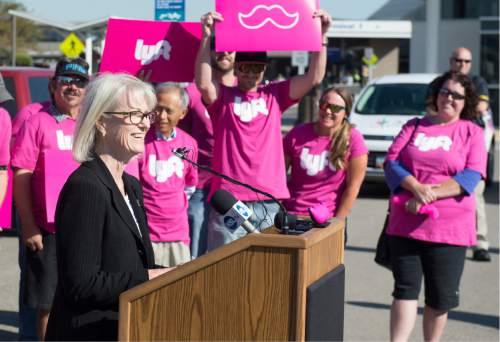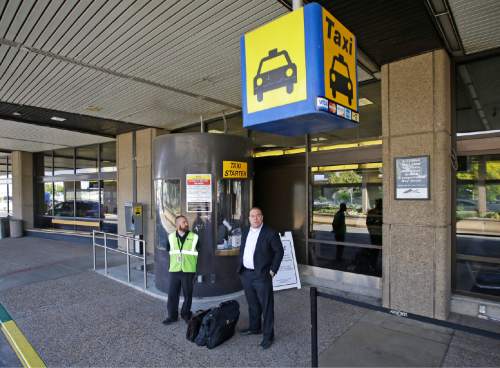This is an archived article that was published on sltrib.com in 2016, and information in the article may be outdated. It is provided only for personal research purposes and may not be reprinted.
Since ride-hailing companies — such as Lyft and Uber — began operating legally at Salt Lake City International Airport last September, they managed to capture a quarter of the market from taxicabs.
Maureen Riley, executive director of the City Department of Airports, gave that report Wednesday to the Airport Advisory Board.
She said Uber and Lyft are changing airport ground transportation "very dramatically on a global basis. ... It's not just Salt Lake City."
Even just the past four months show a big change, she said.
Riley reported that "at the end of last year, taxis generated about 92 percent of the revenue that flows to the airport in this category, and 86 percent of the trips."
But four months later, at the end of April, taxis were down to providing 85 percent of the revenue and 74 percent of the trips.
She said the airport will continue to monitor changes to see if long-term trends emerge, including whether some of the change is simply seasonal — such as perhaps more use of Uber and Lyft during ski season.
"We don't really have a lot of data collected yet because it is so new," she said.
In September, Lyft agreed to live by city rules requiring its freelance drivers to learn airport transportation rules, carry $1 million in liability insurance and be subject to background checks. Other similar companies soon followed suit.
They pay airport user fees based on an "honor system," in which they notify the airport how many trips its drivers take to the passenger terminals. Meanwhile, traditional taxicabs pay through a method that counts each cab trip to the airport.
The city had been a battleground in recent years between taxicabs and the new companies.
In 2014, Salt Lake City initially slapped some Lyft drivers with $6,500 fines, contending they were operating a ground-transportation service without required licenses. Lyft contended its service is akin to offering a ride to a friend and sharing gas money, and challenged city rules.
The city rewrote its ordinances to ease restrictions on the new companies, but they still sought help from the Legislature to avoid them. The Legislature passed a law making ride-hailing companies responsible for their own inspections and background checks, but allowed the airport to regulate ground transportation there.
In response, the city passed an ordinance that deregulated taxis to a large degree to allow them to better compete with the ride-hailing companies.
Finally, the ride-hailing companies came to agreement with the city and the airport on how to operate and collect fees for operating there.







